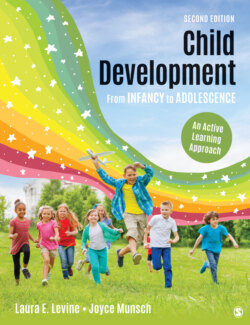Читать книгу Child Development From Infancy to Adolescence - Laura E. Levine - Страница 164
На сайте Литреса книга снята с продажи.
2.2 What are the hypotheses and modern applications of the major child development theories?
Оглавление1 Freud’s psychoanalytic theory states that sexual energy shifts from one area of the body to another as the child develops, forming the basis for five psychosexual stages. Erikson believed the social world and the development of identity were driving forces for development through psychosocial stages.
2 In the theory of behaviorism, classical conditioning pairs an unconditioned stimulus with a neutral stimulus. After repeated pairings, the neutral stimulus elicits a conditioned response. In operant conditioning something that follows a behavior affects the likelihood of that behavior happening again. Reinforcement increases the behavior, while punishment and extinction decrease it.
3 Bandura’s social cognitive theory emphasizes the importance of imitation as a learning process.
4 Piaget’s theory of cognitive development states that we organize the world into schemas and either assimilate new information that fits into them or accommodate it by changing our schemas.
5 Vygotsky emphasized the role of social interaction and believed adults or more skilled peers build children’s knowledge through scaffolding. Learning occurs in the child’s zone of proximal development.
6 Information processing initially likened the functioning of the mind to the way that computers work. The more recent connectionist or neural network model describes mental processing as a neural network of concept nodes that are interconnected by links. Developmental cognitive neuroscience links brain development with cognitive changes.
7 Ethology is the study of animal and human behavior in relation to their adaptation to the natural environment. Evolutionary developmental psychology applies the principles and ideas of evolutionary theory to questions of how and why children develop as they do.
8 Bronfenbrenner’s ecological theory proposed that individuals grow and develop within a nested set of influences that he divided into five systems: microsystem, mesosystem, exosystem, macrosystem, and chronosystem.
9 Dynamic systems theory examines the way all aspects of development—biological, cognitive, and social-emotional—influence one another as children work out unique responses to developmental challenges.
